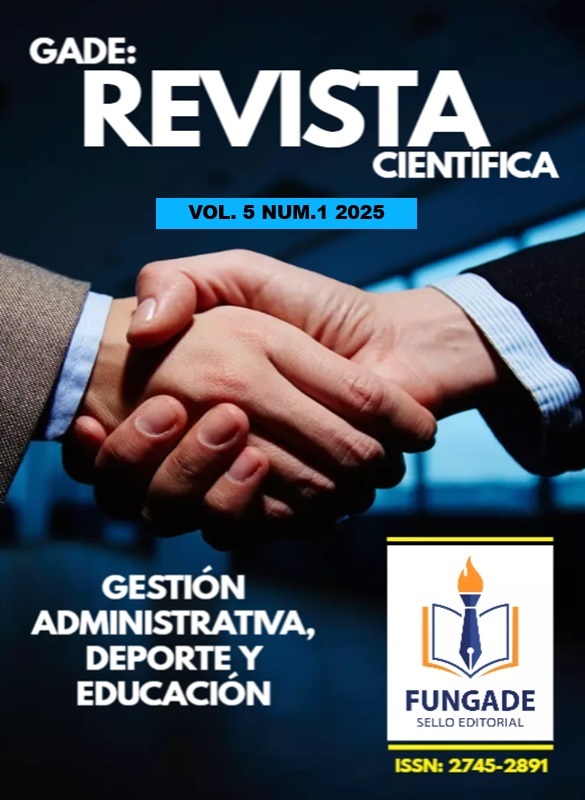A journey through Autism: The Case of Nicolás
Abstract
Autism according to López Gómez, S., Rivas Torres, R. M., & Taboada Ares, E. M. (2009)..is a disorder of great complexity in its etiology, as a consequence this article seeks to show the generalities of a case specifically of a child who found in his family a support to be able to be what is the methodology for this qualitative study under the biographical method of life history, the information was collected through surveys, semi-structured interviews and direct observation which allowed us to reach results that helps to destigmatize autism, recognize the value of the family as a support to raise your child, highlighting the abilities that each person with this diagnosis may have but that in many cases the same methodological barriers imposed by each teacher do not allow them to exploit These skills, the conclusions were reached that when the teacher or anyone focuses more on the person than on the diagnosis, the development and advances in young people with autism are really valuable, and it is also recognized that it is not only a responsibility of the teachers that the family plays an important role in academic processes and that if they are always there the results are greater and are even inspiring for other parents who find themselves in the same situation
Downloads
References
Arroyo Guerrero, J. R. (2017). Satisfacción del Cuidador y su Relación con el Nivel de Autismo de los Niños del CEBE Señor de los Milagros, Huaraz, 2017.
https://repositorio.ucv.edu.pe/handle/20.500.12692/29544
Bello, M. N. (2018). Autismo y familia. Autonomía personal, (22), 70-75.
https://dialnet.unirioja.es/servlet/articulo?codigo=7192878
Carrasco Sotelo, A. (2019). Propuesta de intervención musical para niños con Trastorno del Espectro Autista.
https://idus.us.es/bitstream/handle/11441/90427/CARRASCO%20SOTELO,%20ANDREA.pdf
López Gómez, S., Rivas Torres, R. M., & Taboada Ares, E. M. (2009). Revisiones sobre el autismo. Revista latinoamericana de Psicología, 41(3), 555-570
http://www.scielo.org.co/scielo.php?pid=S012005342009000300011&script=sci_arttex
Mulas, F., Ros-Cervera, G., Millá, M. G., Etchepareborda, M. C., Abad, L., & Téllez de Meneses, M. (2010). Modelos de intervención en niños con autismo. Revista de neurología, 50(3), 77-84.
Misquiatti, A. R. N., Brito, M. C., Ferreira, F. T. S., & Assumpção Júnior, F. B. (2015) Sobrecarga familiar e crianças com transtornos do espectro do autismo: perspectiva dos cuidadores. Revista Cefac, 17, 192-20
https://www.scielo.br/j/rcefac/a/3pfYytcbXMZxHhHFNFpwWHP/
Gil Moya, M. (2023). La inclusión educativa de niños con NEE: guía de sensibilización para familias y docentes (Bachelor’s thesis).
https://riucv.ucv.es/handle/20.500.12466/4120
Molina Chacón, J. M. (2017). Áreas de intervención del psicopedagogo en las Molina Chacón, J. M. (2017). Áreas de intervención del psicopedagogo en las orientaciones psicoeducativas para padres y madres de familia de niños con Trastorno del Espectro Autismo para favorecer la adquisición de habilidades adaptativas.
https://repositorio.uned.ac.cr/handle/120809/1624
Organización Mundial de la salud OMS
https://www.who.int/es/news-room/fact-sheets/detail/autism-spectrum-disorders
Prieto, M. A., & Cerdá, J. M. (2002). Investigación cualitativa. Paso a paso en el diseño de un estudio mediante grupos focales. Consultantes, 149.
Sánchez, L. P., & Llera, J. B. (2006). Dos décadas de «inteligencias múltiples»: implicaciones para la psicología de la educación. Papeles del psicólogo, 27(3), 147-164.
https://www.redalyc.org/pdf/778/77827304.pdf
Senge, P., Cambron-McCabe, N., Lucas, T., Smith, B., & Dutton, J. (2006). La quinta disciplina: Escuelas que aprenden: Un manual de la quinta disciplina para educadores, padres de familia y todos los que se interesen en la educación. Editorial Norma.
Rentería, K. O. (2023). Musicoterapia como estrategia de intervención educativa para el trastorno del espectro autista (TEA). Runae, 80-96.
https://revistas.unae.edu.ec/index.php/runae/article/view/859
Copyright (c) 2025 Jesus Kerguelen

This work is licensed under a Creative Commons Attribution-NonCommercial-NoDerivatives 4.0 International License.






